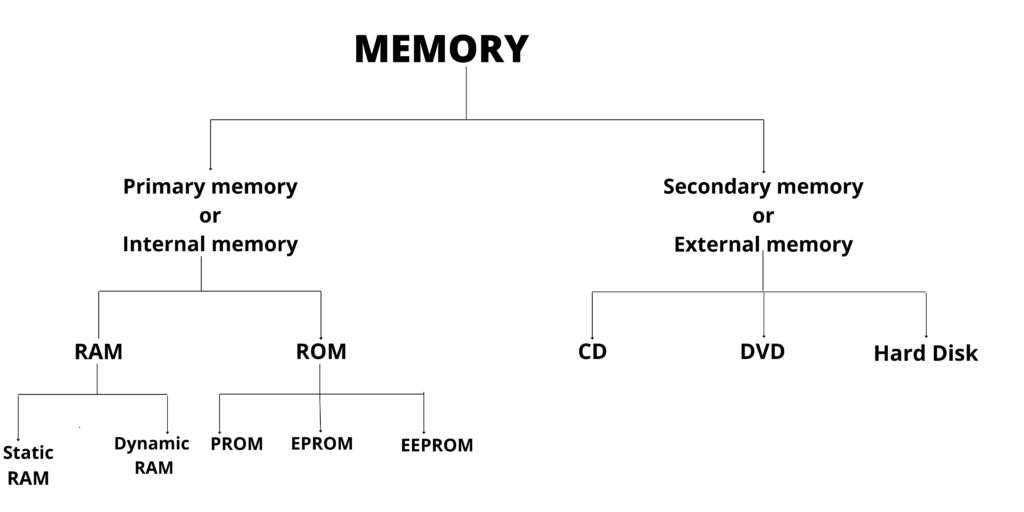
Friends, in this article you will learn what is memory and what are the different types of memory available in a computer in the most simplest way.
MEMORY
The memory in a computer stores data and instructions entered by a user whether for a short period or for a long period of time. It holds the data before and after the processing is done on it.
The memory of a computer is divided into two categories
i. Primary memory
ii. Secondary memory
PRIMARY MEMORY
Primary memory is also called internal memory as it is located inside the computer. The primary or internal memory is divided into many storage locations each of which can hold data and instructions. The primary memory is also known as Main memory.
The Internal or Primary or Main memory is again classified into two categories
i. RAM
ii.ROM
RAM
RAM stands for Random Access Memory. It is also called Read/write memory as we can read and write on it. The data and instructions entered through input device are temporarily stored in RAM during processing in a computer. The contents of this memory are lost when the computer is switched off or the power supply is stopped . That is why RAM is called volatile or temporary memory.
RAM can be classified into two categories
i. Static RAM
ii. Dynamic RAM
ROM
ROM stands for Read Only Memory. It is called so as we can only read from it but cannot write or change its contents. ROM is called non volatile or permanent memory. The contents of this memory are written by the manufacturer for running of the computer. These are basically the starting programs.
ROM can be classified into three categories
i. PROM
ii. EPROM
iii. EEPROM
PROM
PROM stands for Programmable Read Only Memory. It can be programmed or written only once after manufacturing of a computer. The writing process in PROM is performed electrically with a special equipment. PROM is more flexible and convenient to use than ROM. PROM is also non volatile or permament like ROM.
EPROM
EPROM stands for Erasable Programmable Read Only Memory. EPROM can also be read and written like PROM but the writing process in EPROM is not as simple as ROM/PROM. The data in EPROM can be erased by exposing the chip to ultra violet light. It is costly to use. One disadvantage in EPROM is that data of a particular memory location can not be erased.
EEPROM
EEPROM stands for Electrically Erasable Programmable Read Only Memory. This type of ROM can be programmed electrically as many times as we want. The advantage of EEPROM over EPROM is that data of a particular memory location can be erased in it.
SECONDARY MEMORY
Another type of memory is secondary memory or external memory. It is called external as it is located outside the CPU. The data and instructions are stored permanently in secondary memory and can be retrieved whenever needed. The CPU can not process the data directly in secondary memory, it must be brought to RAM of a computer for processing.
The following chart shows the classification of memory

Conclusion
Friends, if you are interested to know in detail what are the types of memory in computer then click the link below.
If you have any query or doubt regarding this please let me know in the comment section or you can email me at [email protected]
If you like the contents please share it with your friends so that they can also have knowledge on it.

Hello students,
Welcome to my site. I am the founder of the blog elearnersmentor.com. I have been in teaching profession since 2004. Presently I am working as a vocational subject teacher(IT) in a reputed govt. higher secondary school. Read more